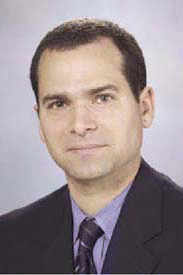Oropharyngeal cancers, including cancers of the tonsils, soft palate, posterior pharynx, and base of the tongue are not diseases that most otolaryngologists-head and neck surgeons come across in their day-to-day practice. In fact, the American Cancer Society estimates that only 8950 new cases of pharyngeal cancer, including cancers of the oropharynx and hypopharynx, are diagnosed each year in the United States, with an estimated mortality of 2,100 annually (CA Cancer J Clin. 2006; 56(2):106-130). Men are three times more likely to be afflicted than women, and onset is usually around 60 years of age.
Explore This Issue
September 2006However, in recent decades, we have seen a rise in oropharyngeal cancer in patients under 45 years of age. These patients don’t fit the risk profile with typical exposures to tobacco or alcohol. – -Erich M. Sturgis, MD, MPH
Younger Patient Population Reveals New Risk Factor
However, in recent decades, we have seen a rise in oropharyngeal cancer in patients under 45 years of age, said Erich M. Sturgis, MD, MPH, Associate Professor of Head and Neck Surgery and Epidemiology at the University of Texas M. D. Anderson Cancer Center and an ENToday Editorial Board member. These patients don’t fit the risk profile with typical exposures to tobacco or alcohol, whereas in the past, 85% to 95% of oropharyngeal cancer patients had a history of such exposures.
What we are discovering is that these younger, non-smoking patients are infected with high-risk (oncogenic) types of human papillomavirus [HPV], an extremely common sexually transmitted infection often found in females with high-grade cervical dysplasia or cancer, Dr. Sturgis said. Although the mode of transmission is not fully understood, oral/genital contact is an important possibility.
HPV types 16 and 18 are typically responsible for most high-grade intraepithelial lesions (such as high-grade cervical dysplasia) that may progress to carcinomas. Molecular evidence indicates that the same oncoproteins or growth-promoting proteins (E6 and E7 of HPV high-risk types, such as 16) that inactivate the p53 and retinoblastoma tumor suppressor genes and promote genomic instability in cervical cancer do likewise in head and neck cancers (J Natl Cancer Inst. 1998;90(21):1626-1636; J Clin Oncol. 2006;24(5):736-747).
In 2003, researchers working on the International Agency for Research on Cancer Multicenter Study compared 1670 patients who had oral cancer (both oral cavity and orophayngeal sites) with 1732 healthy volunteers from nine countries (J Natl Cancer Inst. 2003; 95(23):1772-1783). HPV-16, the strain most commonly found in cervical cancer, was also detected in most of the oropharyngeal cancers. Participants with cancers containing the HPV-16 strain were three times as likely to report having had oral sex as those with tumors not containing HPV-16. There was no difference between men and women in terms of how likely the virus was to be present in these cancers.
Women with high-grade cervical dysplasia need to be informed that they may transmit HPV to their partners putting them at risk for such infections and potentially HPV-associated malignancies, said Dr. Sturgis.
Small Impact on Detection, Diagnosis so Far
Anyone with a persistent unilateral soar throat or a neck mass, often called ‘swollen glands,’ should be referred to a qualified ENT or head and neck surgeon for further evaluation, said Maura L. Gillison, MD, PhD, Assistant Professor of Oncology at the Johns Hopkins Medical Institutions in Baltimore, Md.


Leave a Reply